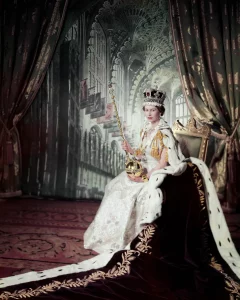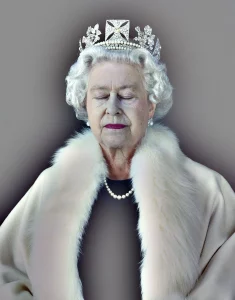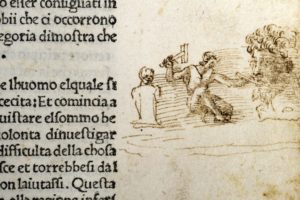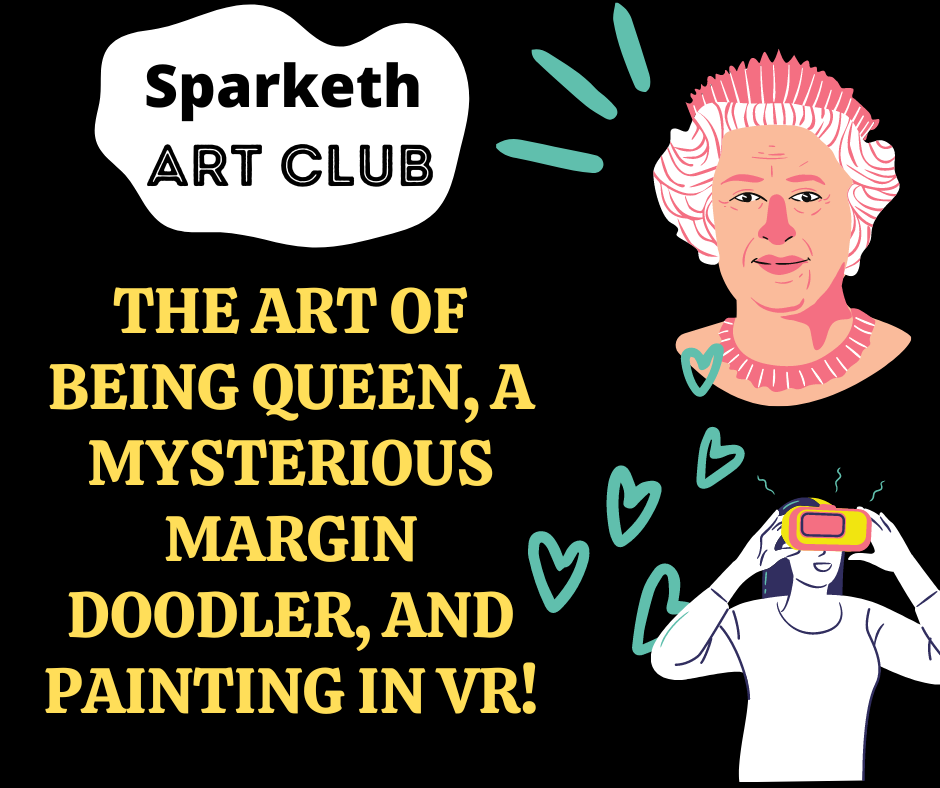Happy Friday artists, art lovers, and parents of creative kids and teens! Welcome to Art Club: Sparketh’s new weekly round-up of the latest in art news, creative resources, trending art challenges (and more.) If you love the arts and creativity, you’re in the right place.
Today: we’re paying tribute to the Queen, investigating a mysterious 500 year old margin doodle, and sharing some trending art strategies you can check out at home!
Art News: The Art of Being Queen Elizabeth II
Yesterday, on September 8, the world received the news that Queen Elizabeth II passed away in Balmoral, her Scotland home. She was 96 years old. Queen Elizabeth was the longest ruling monarch in British history. However, she was more than that. Since her coronation in 1953, Queen Elizabeth has become a beloved icon, a symbol for the British anthem of “Keep Calm and Carry On,” (and the Western World’s unofficial fancy grandma). In her long lifetime, Queen Elizabeth also made a lasting impact on the art world.
Queen Elizabeth was “one of the most recognisable and also one of the most painted figures of her era or any other, depicted by some of the most interesting artists of the day from Pietro Annigoni in 1955 to Lucian Freud in 2001 and by photographers ranging from Cecil Beaton to Annie Leibovitz.” (The Art Newspaper )
This article from Culture Trip shares some of the most iconic portraits of the Queen, painted by some of the past century’s most noteworthy artists, in a huge variety of art styles that reflect the Queen’s face alongside the world’s changing times.

Cecil Beaton: Queen Elizabeth II on her Coronation Day (1953)
The many portraits of the Queen, in their wide variety of art styles, represent more than just the woman behind them. These portraits show us how the world has changed over the generations of Queen Elizabeth’s reign. Through the span of her rule, these portraits reveal how the Queen has been a fixed point by which society views itself.
Over the 7 decades of her monarchy, the face of Elizabeth II became iconic: a visible image of stability, calm, and grit during uncertain times. Through her role as Queen, she made herself a symbol, a living art form. History – and art history- will remember her long and steadfast reign. Rest in peace, Queen Elizabeth II.

Chris Levine: The Lightness of Being (2014)
Read more about Queen Elizabeth II’s life and her relationship with art from the articles below:
The Culture Trip: Portraits of Queen Elizabeth that Everyone Should See
Trending Art: Fun & Easy Self-Portrait Trick
Speaking of portraits, we have a trending self-portrait art challenge for our young (or older) artists to try at home.
This TikTok shows artists who are a little intimidated by the self-portrait a fun and easy way to create a beautiful and vivid one. Yes, it involves some tracing. (But don’t call that cheating!) Instead, this challenge is a great way to learn about facial planes, combining contrasting colors, and shading/highlighting on the face. Try this art trick at home for yourself! It’s an awesome one for all ages and levels.
@sparketh To enter this art contest, you must be 18 or younger! Winner will receive $100 valued in art prizes- join the Sparketh Community if you haven’t yet and would like to enter! #artcontest #selfportrait #myart #arttok #drawingtutorial #howtodraw #artforbeginners
Serious question: What DO you define as cheating in art, by the way? (Beyond stealing someone’s work and calling it yours, of course.) Is there even such a thing? Pop your thoughts in the comments!
Latest Art News: Michelangelo in the Margins?
I don’t know if any of you are guilty of this, but I was a big-time notebook (and text book) doodler all the way through college. And hey, research says that doodling in class can actually help improve memory and focus, so no shame!
This week, the art world has been captivated by a very special 15th century margin doodle (shown below) found in a copy of Dante’s Divine Comedy.
Why? According to art scholar James Hall, the figure that was sketched there (500 + years ago) is none other than Michelangelo!
In this upcoming book, The Artist’s Studio: A Cultural History, Hall explores his evidence for this further, writing: “The sculptor, hitherto unrecognised, can only be Michelangelo during or shortly after his triumphant achievement carving the David (1501-4).”
Hall goes on to state that the artist of the doodle wasn’t just sketching Michelangelo as he worked on David, but making a commentary as well. The sketch is right next to the section in Divine Comedy where Dante decides to take the “high path to Hell.”
Could this be a prelude to a modern day meme?

The artist’s studio: a cultural history, James Hall, Thames & Hudson, 288pp, hb
Not only is this an insightful discovery to make about a master (and work) that we are familiar with, but it presents a fascinating mystery, too! I don’t know about you, but my brain is buzzing with questions:
- Who was this mysterious margin doodler?
- How did he (or she) know Michelangelo?
- What inside scoop did the doodler hold on the sculpture process of David?
What do you think, Art Club readers??? Write me a story about the Mysterious Margin Doodler in the comments!
Creativity Resource: Painting Along in VR
Do you have an artistic kid that constantly loves to practice, but maybe you’re running out of storage space for the practice pieces? (Or maybe you can relate to that yourself.) Do you have a Quest 2 or PCVR?
If yes, and yes, you’ll LOVE this.
Vermillion is an oil painting simulator designed for VR! It’s available on Quest 2 and PCVR. It is SO INCREDIBLY RELAXING, and it’s also a great way to practice painting techniques. You can blend your own colors and apply different levels of pressure to impact the textures. You can even paint alongside your Web browser, giving you access to your favorite online art classes, or Youtube or TikTok tutorials. Yes, that means you can paint absolutely all the “happy little trees,” your heart desires. You can even make a print of your best work.
Try it the next time someone in your house is stressed out! I promise it will help!
Learn more about Vermillion via their Website, here.

What’s your favorite way to be creative? Sometimes people undermine creativity activities or the arts, but you and I (and Albert Einstein) know that creativity is a very special form of intelligence–one that deserves our time, interest and appreciation! More than that: it’s fun! As you head into a new week ahead, I’m wishing you moments to celebrate creativity and all of the amazing joy it brings to your life!


